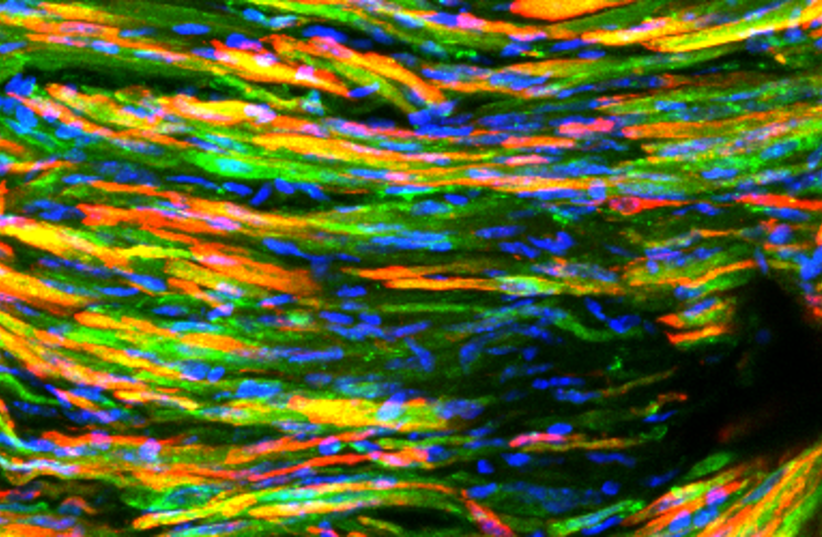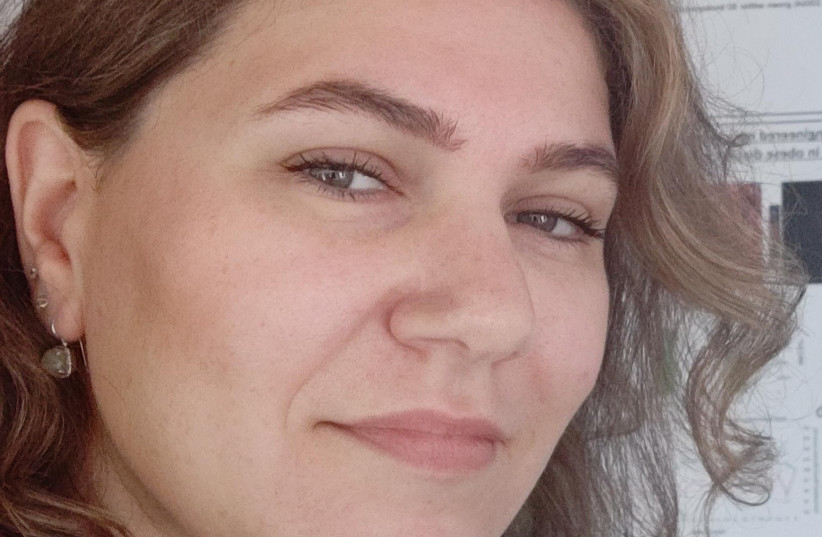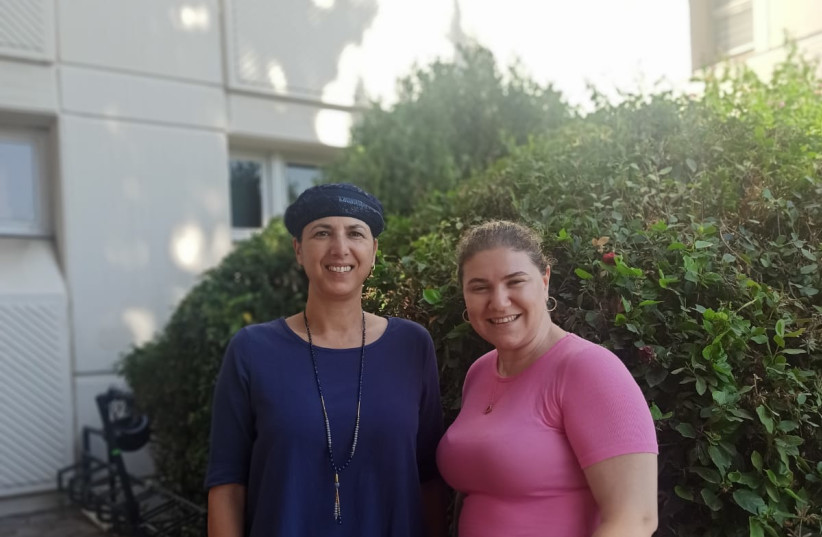A team of researchers at the Technion-Israel Institute of Science have used genetically engineered muscle tissue to cure mice of type 2 diabetes, according to a report published in the peer-reviewed journal Science Advances.
Muscle cells are among the main targets of insulin, and are supposed to absorb sugar from the blood. However, in type 2 diabetics, the ability of these cells to absorb sugar is reduced.
Restoring the metabolic activity of skeletal muscles could therefore provide a cure for the disease. Until now, however, it has been an unexplored optional therapy.
For the past five years, Prof. Shulamit Levenberg and doctoral student Rita Beckerman from the Stem Cell and Tissue Engineering Laboratory in the Technion’s Faculty of Biomedical Engineering have been developing and testing the use of an autograft of muscle cells engineered to take in sugar at increased rates in mice with type 2 diabetes.
Specifically, they isolated muscle cells from mice and then overexpressed the GLUT4 transporter in the cells and created metabolically functional, engineered muscle tissue – tissue that was seeded on polymeric biodegradable scaffolds and cultured for up to three weeks and then ultimately transported back into the abdomen of the diabetic mice.
The results were that not only did the engineered cells proceed to absorb sugar correctly and improve blood sugar levels, Levenberg explained, but they also induced improved absorption in the mice’s other muscle cells by means of signals sent between them.
The mice remained cured of diabetes for the entire four-month period that they were under observation.
“These cells worked hard and absorbed glucose, and also secreted factors that systematically affected the metabolism of the mice,” Levenberg said. In addition to their blood-glucose levels being stabilized, the mice showed other improvements, like less lipids in their livers.
She said, “The approach can be used to rescue mice from their diabetic situation, and now we hope to be able to use it in the future as a treatment for humans.”
The muscle cells could be taken from patients by biopsy, she said, adding that using cells from the patients themselves and then transporting them back would help eliminate the risk of rejection.
Diabetes currently affects around 34 million Americans, the Technion said in a release. Some 90% of them suffer from type 2 diabetes. People with the disease are often plagued by long-term complications, ranging from heart disease and strokes to kidney failure and damage to the retina that can cause blindness, among other challenges. The disease is associated with up to a 10-year reduction in life expectancy.
There is currently no cure for type 2 diabetes. It is treated mainly by a combination of lifestyle and diet changes, medication and insulin injections.
“An effective treatment – and one that is a one-time treatment rather than daily medication – could significantly improve both quality of life and life expectancy of those who have diabetes,” the Technion release said. “The same method could also be used to treat various enzyme deficiency disorders.”
Levenberg said that the next step is to show that it works using human cells in the lab. After that, they could move to human trials, though she said this is still “several years away.”
The research was funded by Rina and Avner Schneur as part of the Rina and Avner Schneur Center for Diabetes Research. The foundation had approached Levenberg’s lab in search of a team willing to start research in a new direction not yet in the field. Levenberg said that they decided “to take the challenge on ourselves.”
“It was a high risk to take,” she admitted. “This is a totally out-of-the-box approach. But it shows why sometimes it is important to get funds for research when it is just an idea.
“If you have the resources you can go and try,” she continued. “We were lucky to be able to do it and to show that indeed, this might work.”



